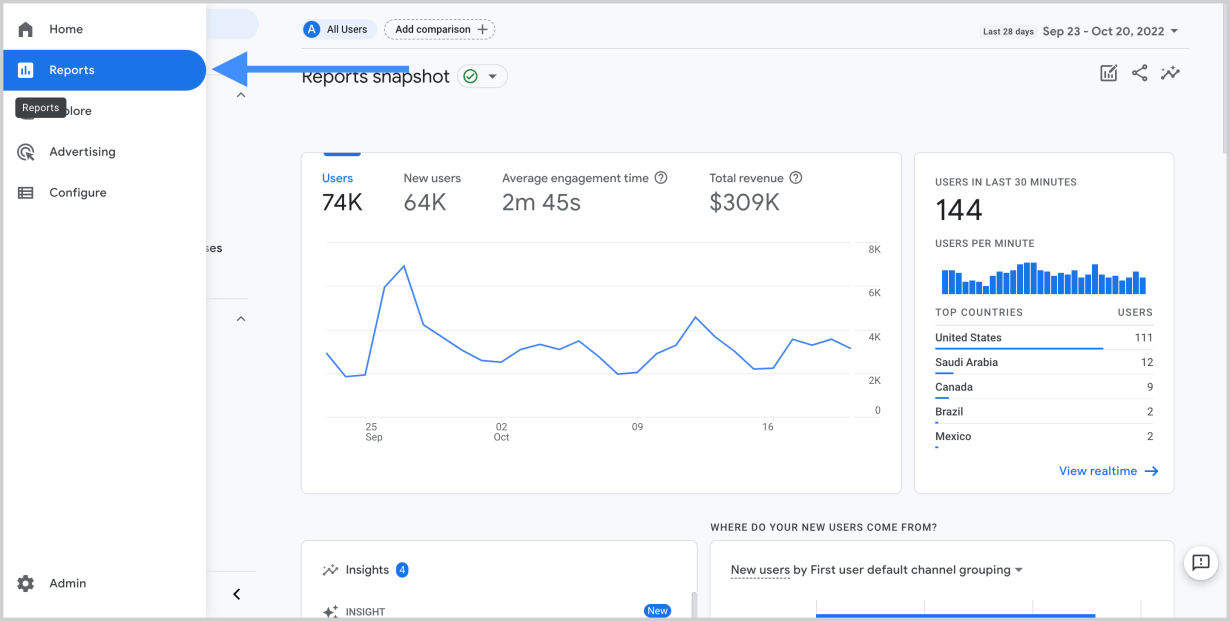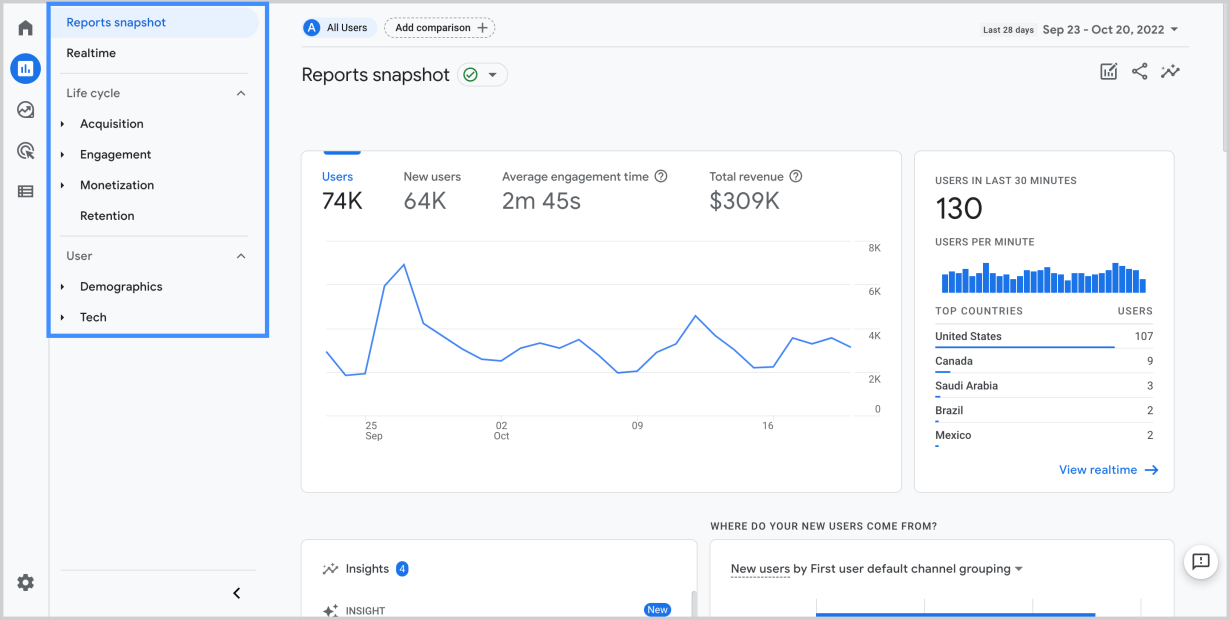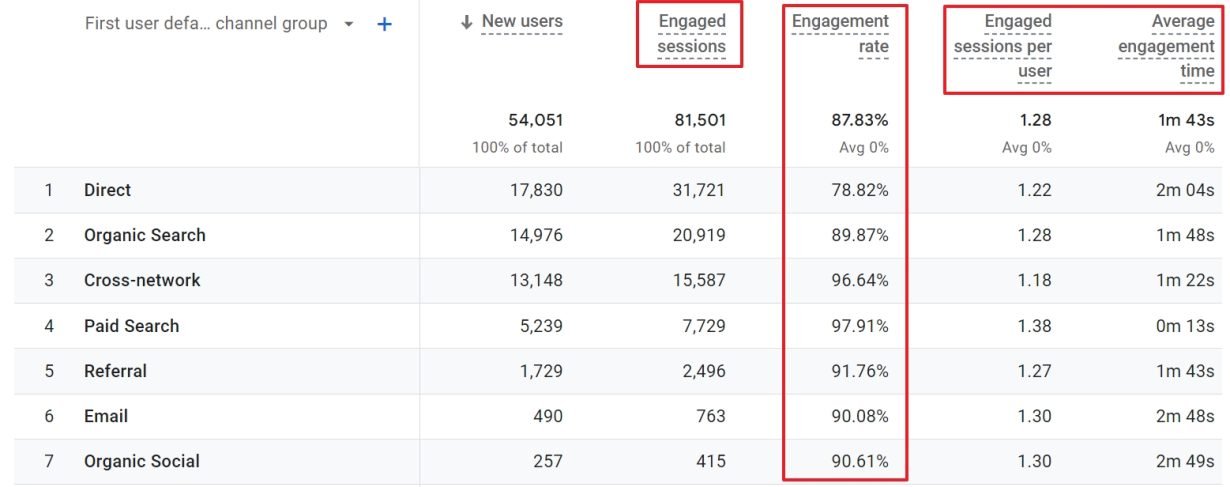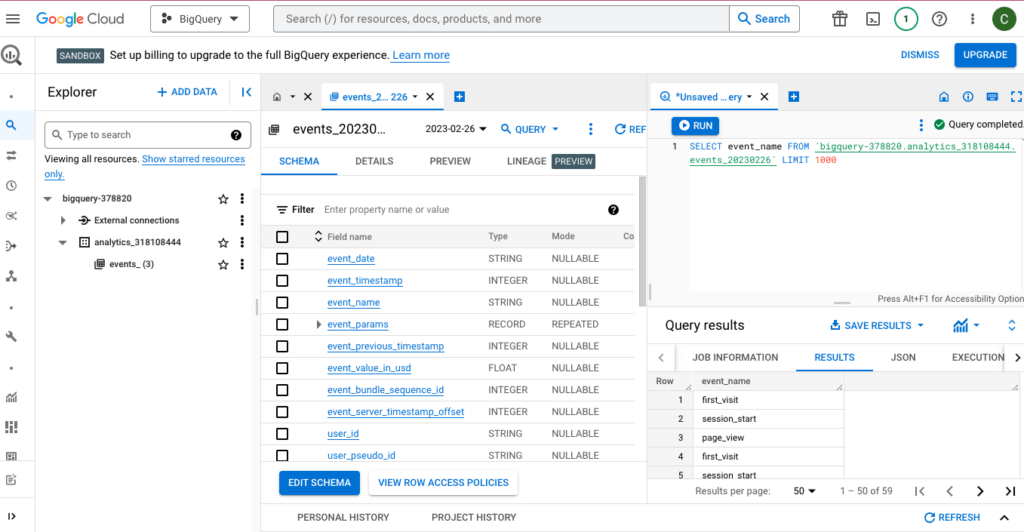The July 1st deadline to migrate standard Universal Analytics (also known as Google Analytics 3) to Google Analytics 4 (GA4) is rapidly approaching, and you probably know you need to prepare for a lot of changes that will affect how you report on data from your website, apps, and marketing campaigns.
At first glance, you’ll notice that Universal Analytics and GA4 have very different reporting interfaces, but this isn’t just a facelift. In GA4, some of the most familiar reports and metrics have either been changed or removed entirely.
Early reviews of GA4 have not been kind, citing complaints including a lack of intuitive reporting, loss of historical data (if you didn’t switch over by Google’s deadline), and an overall difficult-to-use interface.
The challenges are real. But GA4 also comes with some real advantages that can help your business dig deeper into the data and generate more insights.
If you haven’t migrated to GA4 yet (do it now, as you don’t want to lose more historical YoY reporting than you already have) or you’ve migrated but are using UA for reporting, you need to take the initiative and learn how to use the platform that will become your new normal.
The GA4 reporting interface has a new look and advanced measurement capabilities
When you first log into GA4, the first thing you’ll probably notice is the considerably fewer report options compared to Universal Analytics: 1 reporting view vs. the 25 available in UA.

Source: Google
UA bases measurement on sessions and pageviews, but GA4 uses a new model based on events and parameters. In GA4, every action performed by a user will be categorized as an ”event.” This broader approach ideally gives you deeper insights into user engagement on your website.
Most GA4 reports are generated once you start tracking events, but they’ll require additional manual setup if you want access to the same kinds of reports you’re used to in UA.

Source: Google
Once you click into the ‘Reports’ tab in GA4, you’ll see “Overview” and “Detail” reports. Google provided some handy definitions:
- An overview report summarizes information about a topic; for example, the Acquisition overview and Engagement overview reports.
- A detail report allows you to drill into one or two dimensions to investigate your data in greater detail, like ecommerce purchases or events reports.
GA4 simplifies the activation of advanced measurement functionalities. You can click a switch in GA4 and effortlessly establish tracking for outbound link clicks and scroll depth. Compare that to UA, where similar capabilities require a laborious setup or modifying the tracking code.
GA4’s enhanced measurement capabilities are based on a different set of metrics
A session in Universal Analytics refers to a collection of activities performed by a user within a specified time frame, including page views, events, and transactions. It serves as a comprehensive record of all user interactions on your website.
GA4 sessions, on the other hand, don’t have a time constraint. Unlike UA, GA4 doesn’t create new sessions when a user changes their source in the middle of a session. As a result, the number of sessions recorded in GA4 is likely to be lower and the calculation of average session duration in GA4 will undergo significant modification. One example: GA4 no longer measures average pages per session the way UA did.
It’s also worth noting that gone are the days of measuring your apps and websites separately, which is great news for mobile app owners: you can now seamlessly track cross-platform data between your site and app with precision. But there’s some assembly required; you’ll need to set up an App data stream.
Another big change is that GA4 doesn’t measure bounce rate the same way. It was initially reported by early GA4 adopters that bounce rate was eliminated. That’s not the case, but the bounce rate isn’t easy to find in the interface, which is probably intentional because of Google’s shift to event-based measurement. If bounce rate matters to your brand, you can still set it up in your reporting, but it’s a multi-step process.
But GA4 offers a clear alternative; the new platform is set up for you to easily track engagement rate instead.

Source: datadrivenu.com
Engagement rate doesn’t just consider the visitors who stay on the same page of your website but also how long they spend on that page. It won’t be an apples-to-apples comparison to your historical bounce rate data, but it’s worth considering whether it’s worth shifting to the new metric instead of immediately trying to set up the kind of bounce rate reporting you’re used to. Ask yourself what kind of insights you were getting from bounce rate, and whether the new engagement rate can answer some of the same questions, even if it’s answering them in a different way.
Remember: different doesn’t necessarily mean worse.
GA4’s approach to data management will take getting used to, but there are workarounds to data retention issues
While Universal Analytics basically stores your data for what feels like forever (14 months, 26 months, 38 months, 50 months, and “do not automatically expire”), GA4’s data expires after 2 or 14 months. Year-over-year comparison will still be possible, but accessing your historic data won’t be.
If you initiated the process of transferring your GA4 data to BigQuery at an early stage, you will be able to preserve your historical data. Access to data will be limited to the day of its setup, so the sooner you set it up, the more historical data you’ll have for reporting. In the past, this BigQuery integration was exclusively available to paying users of GA. Now all GA4 property owners can access the data export.
Another major change centers on the schema of the native connector in GA4, which is completely different from UA. That means you might need to take some time to remap your GA4 data before transferring it into BigQuery. Once you’ve done that, however, executing SQL queries should become significantly simpler due to the more organized data storage.

Source: Growwithfarm.com
GA4 also provides a heightened level of user-friendly and accurate data management, so you have greater control over collection of personal data, a critical aid to compliance with existing and forthcoming privacy regulations. Notably, GA4 allows you to conveniently exclude particular events and user attributes from ad personalization.
Start using GA4 now to unlock improved reporting with unique new features
While GA4 has certainly been a shock to the marketing ecosystem as a whole and individual marketers in particular, it will also make some things easier and offers certain features that are a clear improvement over UA, including:
- Customer journey tracking: The primary focus has shifted away from measurements that can be easily fragmented by device or platform, like sessions. Now the main focus is on users and their interactions, which are exclusively recorded as events. This shift towards a user-centric approach and an event-driven data model means you’ll be working with a unified set of metrics and dimensions for analyzing both web and app data, facilitating more intelligent aggregation across the customer journey.
- User engagement analysis: The old reliable Audience, Acquisition, Behavior, and Conversion menus of UA have been replaced by a comprehensive ”Lifecycle” section that divides analysis into Acquisition, Engagement, Monetization, and Retention. Additionally, Google has introduced a separate ”User” section, which emphasizes user demographics and technology.
- Engagement metrics: It’s now a lot easier to effectively gauge users’ level of engagement and interest by looking at the different ways they’re engaging with your brand, including the newly implemented pre-configured scroll, video, outbound clicks, and file download events.
- Campaign audiences: GA4 will help you access a broader range of potential audiences for marketing campaigns through enhanced measurement, analyst tools, and integrations. This increased power translates into better return on ad spend.
- User privacy and tracking features: With more data restrictions coming from platforms and legislation, GA4 has redesigned its analytics approach to enhance flexibility and adaptability for a future where cookies will be less prevalent, and user privacy will increasingly be a top priority for both users and regulatory entities.
One thing that hasn’t changed much is attribution modeling and reporting. To access attribution reporting in GA4, you can navigate to the “Advertising Snapshot”, “Model Comparison”, or “Conversion Paths” sections, which offer a set of reports that will help you establish connections between your marketing efforts and sales.
The deadline to migrate over to GA4 is almost here. If you haven’t made the switch, use what little time is left to start getting comfortable with the new changes. It’s a big learning curve, but there are also improvements and advantages that will help you get more insights from your data.








Responses